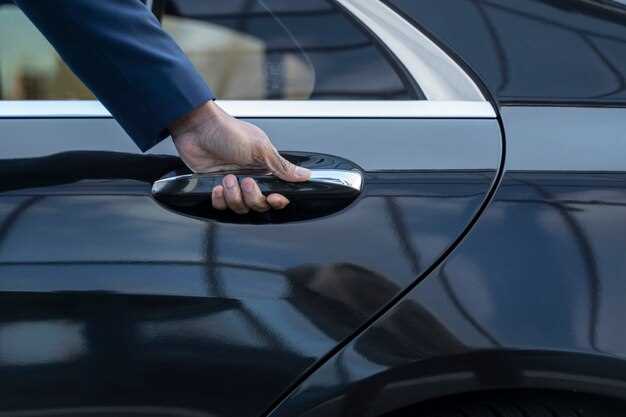
The legal implications surrounding tinted license plate covers have sparked considerable debate among motorists and law enforcement officials alike. As vehicle owners seek to customize their cars, many opt for tinted covers to enhance aesthetics or provide protection from the elements. However, the legality of these accessories varies significantly from state to state and country to country.
Understanding the legal status of tinted license plate covers is crucial for vehicle owners who wish to avoid potential fines or other penalties. In many jurisdictions, the main concern lies with the visibility of the license plate itself. Authorities emphasize that any obstruction to the license plate’s readability can lead to serious consequences, including traffic stops or citations.
In this article, we will dissect the laws governing tinted license plate covers, clarify the reasons behind those regulations, and outline the potential risks associated with using such products. Whether you’re a car enthusiast or simply looking to enhance your vehicle, being informed about the legal framework is essential to ensure compliance and safety on the road.
State-Specific Regulations on Tinted License Plate Covers

Tinted license plate covers are subject to varying regulations across different states in the U.S. Vehicle owners must be aware of these laws to avoid fines or legal issues. Below is a breakdown of regulations by state:
- California:
In California, tinted covers are prohibited. The law mandates that license plates must be clearly visible and readable from a distance. Any obstruction, including tinting, can lead to fines.
- Texas:
Texas permits tinted license plate covers, but they must not obscure the letters or numbers on the plate. The tint should not be darker than a specific threshold defined by state law.
- Florida:
Florida allows certain types of tinted covers as long as they do not make the license plate numbers illegible. However, excessive tinting can result in a citation.
- New York:
In New York, all forms of license plate obstruction, including tinted covers, are illegal. The law enforces strict visibility requirements, and vehicles found in violation can be stopped and cited.
- Illinois:
Illinois law prohibits any type of vehicle accessories that impair visibility of the license plate. Tinted covers fall under this regulation and are not allowed.
- Pennsylvania:
Pennsylvania allows tinted covers but requires them to be transparent enough so that the license plate remains readable from a distance. Non-compliance can lead to penalties.
- Ohio:
Ohio permits tinted covers only if they do not hinder visibility of the plate. Enforcement may vary, so drivers should proceed with caution.
In summary, it’s crucial to check the specific laws in your state regarding tinted license plate covers. Compliance not only avoids penalties but also ensures safe driving conditions and law enforcement efficiency.
Consequences of Using Illegal Tinted License Plate Covers

The use of illegal tinted license plate covers can lead to a variety of serious consequences for vehicle owners. Law enforcement agencies enforce regulations regarding visibility and clarity of license plates to ensure safety and accountability on the roads. When a vehicle is equipped with a tinted cover that obscures the plate, it may hinder the identification of the vehicle in various situations, such as traffic stops, accidents, or criminal activities.
One of the most immediate consequences of using tinted license plate covers is the likelihood of receiving a traffic citation. Police officers have the authority to issue fines for any modifications to a vehicle that violate local and state laws, including those pertaining to license plate visibility. These fines can vary significantly depending on local regulations but often range from $50 to several hundred dollars.
In addition to monetary fines, repeated offenses or failure to comply with a citation could lead to more severe penalties, including potential points on the driver’s record. Accumulation of points may result in increased insurance premiums, leading to higher financial burdens for the vehicle owner. In extreme cases, habitual offenders might face license suspension or revocation after a certain threshold of violations is reached.
Using tinted covers can also lead to complications in legal matters. For example, if a vehicle is involved in a hit-and-run incident or other criminal activity, the inability to clearly identify the license plate may complicate investigations. This not only affects the driver’s legal standing but could also create challenges for law enforcement in ensuring proper justice is served.
Additionally, insurance companies may view the use of illegal modifications as a risk factor. If a vehicle with tinted license plate covers is involved in an accident, insurers may refuse claim payouts or increase premiums based on the perceived negligence of not adhering to vehicle regulations.
Ultimately, the best course of action for vehicle owners is to ensure compliance with all local laws regarding license plate visibility. Understanding the potential legal and financial repercussions of using illegal tinted license plate covers can prevent unnecessary complications and ensure safer driving experiences.
Alternatives to Tinted Covers for Privacy Enhancement
While tinted license plate covers may offer a straightforward solution for privacy enhancement, several alternatives exist that can provide effective protection without potential legal issues. These alternatives not only help maintain anonymity but also adhere to regulations regarding vehicle identification.
1. License Plate Frames: Using specially designed license plate frames can help obscure certain details while remaining legal. Look for frames that are engineered to only partially cover the plate’s text or registration numbers, minimizing visibility to unauthorized observers without obstructing required information.
2. Privacy Film: Opting for a removable privacy film can provide a versatile option. This film is applied directly onto the plate and can be easily removed when necessary. It aids in reducing glare and limiting visibility while complying with legal standards, provided it does not completely obscure the plate’s elements.
3. Secure Storage Solutions: For individuals concerned about theft or unwanted attention, considering secure storage methods can be beneficial. Utilize garages or secure parking areas to keep your vehicle protected and lessen the chance of intrusive behavior or privacy breaches.
4. Remote Start Systems: Remote start technologies can add an additional layer of privacy by allowing the driver to start the vehicle from a distance. This minimizes the need to approach the vehicle in public settings, thereby reducing exposure to potential harassment or theft.
5. License Plate Recognition (LPR) Shields: Some products on the market specifically target license plate privacy while remaining within legal parameters. These shields are designed to reflect camera light, making it difficult for automated systems to capture the plate number, thereby preserving privacy without full obstruction.
By employing these alternatives, vehicle owners can enhance privacy without breaching regulations or risking penalties associated with tinted covers. Exploring these options allows for a balanced approach towards maintaining personal safety and complying with the law.
